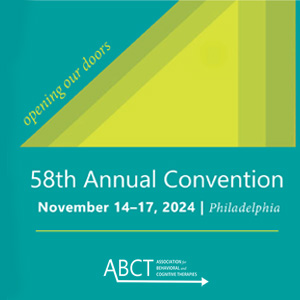Child / Adolescent - Depression
(PS5-67) Comparing Family Accommodation in Youth Depression, Anxiety Disorders, and Nonclinical Controls
- IS
Isabelle E. Siegel, PsyM
Doctoral Student
Rutgers University Graduate School of Applied & Professional Psychology
Teaneck, New Jersey, United States .jpg)
Brian C. Chu, Ph.D.
Professor
Rutgers University
Piscataway, New Jersey, United States
Author(s)
Co-Author(s)
Research suggests high levels of accommodation among families of youth with OCD and anxiety disorders (ADs). However, little work has explored family accommodation in the context of depression. The current study sought to examine accommodation in the context of youth depression, comparing patterns of accommodation between families of youth with primary depression, primary ADs, and nonclinical controls.
A total of 254 primary caregivers of youth, ages 9-17, (Mage = 13.01, SD = 2.5; 56.1% female), completed symptom and family functioning measures in the context of a RCT treating youth anxiety and depression. We directly compared reports of accommodation between caregivers of youth with primary depression (n=59), primary ADs (n=134), and nonclinical controls (n=61). Accommodation was assessed using the Family Accommodation Scale - Anxiety (FAS-A; Lebowitz et al., 2013), which includes subscales assessing participation in symptom-related behaviors and modification of routines. Primary diagnosis was determined by the Anxiety Disorders Interview Schedule for DSM-5, Child and Parent Version (ADIS-5-C/P), and youth anxiety and depression symptoms were assessed using caregiver-reported Revised Child Anxiety and Depression Scale (RCADS; Chorpita et al., 2000). A series of one-way and univariate ANOVAs were used to compare accommodation between groups.
Results suggest that accommodation is prevalent among families of primarily depressed and primarily anxious youth. There was a statistically significant difference in total accommodation (F[2, 242] = 54.01, p < .001, partial η2 = .31), participation in symptom-related behaviors (F[2, 242] = 53.246, p < .001, partial η2 = .306), and modification of routines (F[2, 242] = 35.605, p < .001, partial η2 = .227) between caregivers of depressed youth, anxious youth, and nonclinical controls. Caregivers of depressed youth (M = 15.18, SD = 7.39) and anxious youth (M = 14.63, SD = 8.08) reported significantly greater total accommodation than those of nonclinical controls (M = 4.03, SD = 3.19). Rates of total accommodation (p = .88) and participation in symptom-related behaviors (p = .49) did not significantly differ between caregivers of depressed youth relative to those of anxious youth. The difference in rates of modification of routines between the primary depressed and primary anxious groups trended toward significance (p = .076), with caregivers of depressed youth reporting greater modification of routines (M = 6.16, SD = 4.08) than those of anxious youth (M = 4.86, SD = 4.26). All patterns of results remained the same even when controlling for anxiety and depression symptoms.
This is the first study to demonstrate high rates of family accommodation among primarily depressed youth, with rates not differing significantly from those observed in primarily anxious youth. Results indicate that caregivers of depressed youth may engage in greater modification of family routines than caregivers of anxious youth; however, additional research is warranted. Caregivers of both depressed and anxious youth reported greater accommodation than those of nonclinical youth. Overall, findings suggest that family accommodation is relevant to depression and should be considered when treating depressed youth.

.png)
